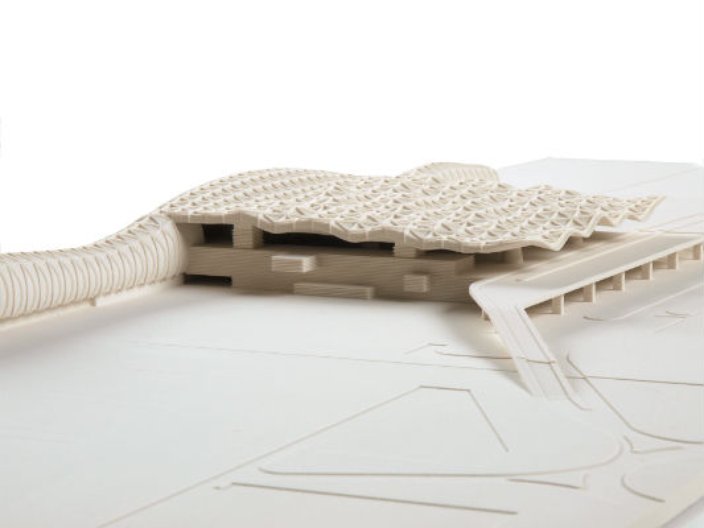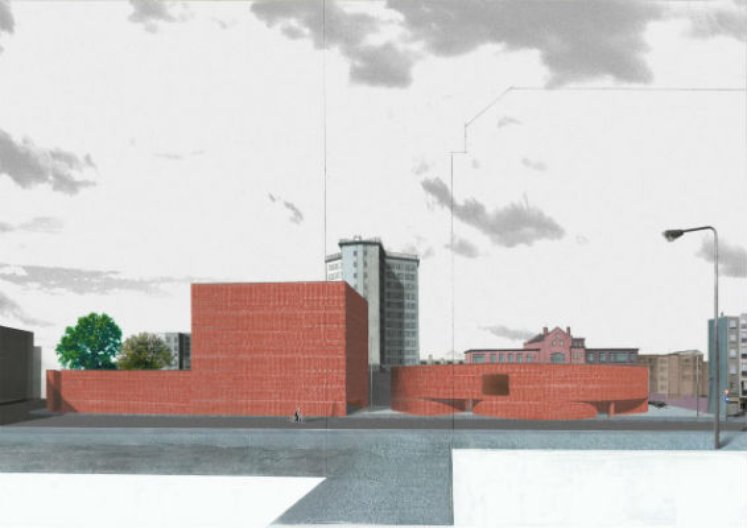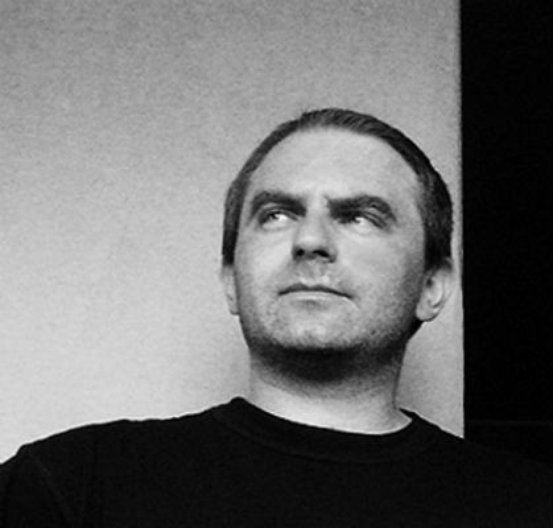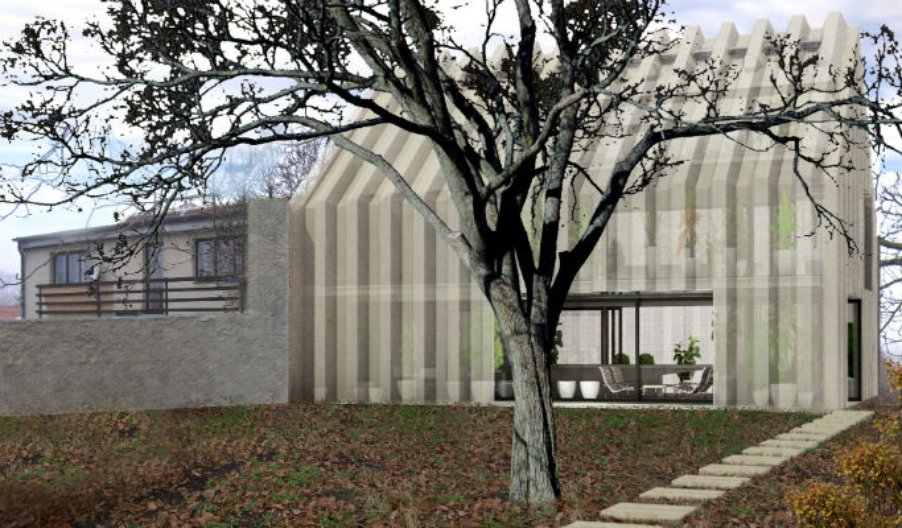30 May 2013
by Niamh Tuft
The projects in Atlas of the Unbuilt World range from large scale infrastructure and masterplans to smaller scale interventions and private residencies. We meet the architects of projects from both sides of this spectrum.
------------------------------------------------------
Nørreport Station is the busiest train station in Copenhagen, with over 250,000 people bustling through it daily. The station is currently undergoing a major renovation with Gottlieb Paludan and COBE. The station will provide an open and welcoming public space at the heart of the city with particular thought given to the needs of cyclists and pedestrians.
Q. What do you find most exciting about working on this project
A. This project is situated in the heart of Copenhagen – it is the busiest station in Denmark. A huge amount of people are passing this area every day walking, biking or by taking the train or metro. The most exciting part of the project has been to transform this dynamic and massive energy into architecture and urban space – and to provide optimal conditions for all kind of travellers – but especially for those on bikes. To find both conceptual overall solutions and specific designs for special challenges such as the bike parking solutions has been a challenging and exciting process. The project wants to state that Copenhagen is the world’s best bicycle city. This is why all bicycle parking will be a visible and central element in the future urban space. In order to create a clear hierarchy between the area for bicycles and the area for city life, all bicycle parking is placed 40 cm below the city floor. The parking will be lighted by innumerable LED lights in the night.
Q. What materials do you like to work with when you make architectural models and why?
A. In the office we work with all kinds of materials from blue foam to cardboard, to wood and plastic. Each material has a potential and its right in different phases of the design process. Foam is extremely suitable for quick sketchy concept models, whereas laser cut acrylic can be beautiful for precise and detailed presentation models. Each material has its own inherent properties that affects the final project. Therefore we often shift between materials and also from physical models to 3D digital models to plan and section drawings and back.
Q. What are some of the interesting emerging trends in architecture in your region?
A. In the aftermath of the crisis we see a shift towards a greater focus on sustainability in all its forms – environmental, economic and social. We see that besides striving for green projects and sound financial solutions, there is a demand for user-driven processes – for bottom-up architecture. Our approach to architecture is inclusive; with social, practical, economic and environmental issues analyzed and integrated within the process. Our aim is to create the best physical conditions for social interaction – we want to make people meet. Architecture becomes less a matter of a certain style or form but more importantly the adaptability to the local context, its social life and the users. Therefore, we work with the coherence between scales – from urban planning, to building and public space. Elements which all together create the physical conditions for people's lives and social interaction.
--------------------------------------------------
The competition to design a scheme for a new terminal at Zagreb Airport attracted international entrants, including Zaha Hadid, but the competition organisers also expressly invited Croatian architects to propose designs. The winning scheme, by a team of Croatian architects (Branko Kincl, Velimer Neidhardt and Jure Radic), responds to both the functional requirements of the complex airport terminal and the surrounding landscape. It’s green technology and sensitivity to ecology ensure that the new terminal provides infrastructure for the future.
Q. What do you find most exciting about working on this project?
A. To submit a proposal for an international competition is the most fascinating rendez-vous of architectural ideas and skills on a global scale. To be participant and winner in such a contest is the most exciting challenge for us as architects.
Q. What materials do you like to work with when you make architectural models and why?
A. It’s virtually impossible to design without 3D tools and modelling now. However, next to the printed models of today, there is still a fascination with classical plexi, balsa, cork, cappafix, and even basic materials like cardboard.
Q. What are some of the interesting emerging trends in architecture in your region?
A. There is a deficiency of large and important projects such as, airports, terminals, stadia, theatres, campuses etc which are vital in the developed world. Therefore, here an architectural specialization is not rational for us. Each task is a new challenge to unveil the unknown, which is a pleasant creative opportunity in architectural design.
-----------------------------------------
The Mercator project by Belgian studio architecten de vylder vinck taillieu seeks to unite the existing campus buildings at the University of Ghent with the new proposed structures for the site. Mercator’s smooth and imperforated brick facade will wrap the entire south side of the campus in an intervention that works across the spaces between buildings.
Q. What do you find most exciting about working on this project?
A. At a certain point while making the concept and after many try-outs we decided to draw something we do not draw usually or immediately. A curved line seems to fit perfectly in the many corners of the plot. And at the same time it did not made order: every side had the same importance and perception. Meeting the unexpected turn. Always so exciting.
Q. What materials do you like to work with when you make architectural models and why?
A. Every project is different. Thereby every model is different. As brick is the project – all walls inside and outside are in brick; visibly and touchable at any time – the material for the project was decided to be made in brown cardboard. Layer by layer; cut out by hand so that the feeling of the brickwork was made present by the curves of the layering of the brown cardboard it self as well by the tolerance of the cutting by hand.
Q. What are some of the interesting emerging trends in architecture in your region?
A. Seemingly there is no trend other than the trend of eager, precise and defined, but unexpected, answers - different at any time, on any questions. If this can be called trend; then that’s the trend.
---------------------------------------------------
Jan Šépka’s House Garden seeks to free a plot between three buildings for a new building. It merges the house with a conservatory structure, connecting the living space with the garden into a unified object. This one off house is small scale but encapsulates ideas for the house of the future.
Q. What do you find most exciting about working on this project?
A. Looking for the concept is the most exciting part in each project. I don‘t focus on creating my own style, I am interested more in finding a response to a specific task for a specific client. In this particular case my friend asked me to create a house for him and his wife. We looked hard for a long time. It took almost a year of vivid discussions to find a suitable concept. The wife of my friend is keen on garden and flowers. So when I came with the idea of a house surrounded by plants, she was thrilled. Our next step was to find out appropriate translucent facade which would provide suitable conditions for the inner garden. In addition to that I was looking for a self-supporting material. Thanks to that the folded laminate desk has been created, which meets all the criteria above.
Q. What materials do you like to work with when you make architectural models and why?
A. I prefer natural materials like wood in combination with others. The purpose of a model is not to create a detailed realistic adaptation but to make certain of a form, concept or other things. I prefer therefore a certain shortcut which helps me in the thinking process about the meaning of the whole construction. Although I create more visualization of each construction, the model is- at least for me- the best projection form.
Q. What are some of the interesting emerging trends in architecture in your region?
The architecture in the Czech Republic is in attenuation right now. Unfortunately I don’t see many strong trends. Of course in the past 20 years the status of our architecture improved, nevertheless with the growing construction production we experience an increase of buildings which have nothing in common with architecture. Regrettably we can find here only a very few excellent quality buildings. I may not be far from the truth to compare the good ones to the top of an iceberg, and the rest, hidden under the water, representing the bad part of the Czech construction business. The reason probably is that the main portion of constructions is not created in the heads of architects but on the table of project offices and big developers where the profit is the main goal. Thanks to that we are surrounded by more and more suburban satellites, commercial buildings or supermarkets of a questionable quality. The architecture is being deteriorated to the position of goods.
------------------------------------
Tolulope Onabolu’s Family Home in Ikoyi, Lagos responds to the challenges of building in Nigeria, namely deficiencies in public infrastructure, electricity and sewage disposal. This residence’s design reflects the need for the building to be self-sustaining and the client and architects wish to build a thoroughly contemporary home in Lagos.
Q. What do you find most exciting about working on this project?
A. This project has been exciting for several reasons. It afforded me the opportunity to setup on my own, which in turn has forced me to consider architecture as a business, as much as it is a creative practice. Further, the client is interested in contemporary architecture, and encouraged a building which would force his construction company to rethink its building methods as part of his corporate restructuring strategy. Finally, it has been empowering as a result of the collaborations locally and internationally.
Q. What materials do you like to work with when you make architectural models and why?
A. I make architectural models in 2 stages, the first is always 3 dimensional on a computer, and the other is made of polystyrene. This allows me to understand the geometry and the proportions I am working with. I consider the building mass as a crucial to the organization of a building - how the volumes are organised, and how they stack together; but also how this organization is presented within the urban realm.
Q. What are some of the interesting emerging trends in architecture in your region?
A. Stylistically, postmodern architecture and what we may term ‘Neo-Colonial’ architecture has held sway in Lagos. However, as a result of many architects of my generation having studied and practiced in Europe and America, a hybrid is slowly emerging, which is at once nostalgic, but also contemporary. It assimilates the vernacular and combines it with the Modernism of the International Style (or its local/tropical variation) which had a huge impact in the urban realm between the 1960 and 1970s in Lagos and other parts of Nigeria.
Category
British Council Project
Tags
Architecture





